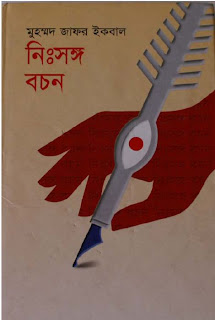Writer: I. Edward Alcamo,Ph.D.
Jennifer M. Warner, Ph.D.
Published Year: 2010 (Second Edition)
Publisher: McGraw- Hill Companies, Inc.
ISBN: 978-0-07-162327-8
Pages: 350 Pages
Size: 6.5 MB(rar)
CONTENTS
Chapter 1 INTRODUCTION TO MICROBIOLOGY
Development of Microbiology. Characteristics of Microorganisms.
Chapter 2 THE CHEMICAL BASIS OF MICROBIOLOGY
Chemical Principles. Organic Compounds of Microorganisms.
Chapter 3 MICROBIAL SIZE AND MICROSCOPY
Size Relationships. Microscopy.
Chapter 4 PROKARYOTES AND EUKARYOTES
Prokaryotes. Eukaryotes.
Chapter 5 MICROBIAL GROWTH AND CULTIVATION
Cell Duplication and Population Growth. Quantifying Microorganisms.
Environmental Growth Conditions. Laboratory Cultivation Methods.
Chapter 6 METABOLISM OF MICROORGANISMS
Enzymes. Energy and ATP. Glycolysis and Fermentation. The Krebs Cycle.
Electron Transport and Chemiosmosis. Other Aspects of Catabolism.
Photosynthesis.
Chapter 7 DNA AND GENE EXPRESSION
Structure and Physiology of DNA. Protein Synthesis. Regulation of Gene
Expression.
Chapter 8 MICROBIAL GENETICS
Mutations. Recombination. Genetic Engineering.
Chapter 9 CONTROL OF MICROORGANISMS
Physical Agents. Chemical Agents. Antibiotics.
Chapter 10 THE MAJOR GROUPS OF BACTERIA
Spirochetes. Gram- Negative Rods and Cocci. Gram- Positive Bacteria. Acid-
Fast and Other Bacteria. The Archaea.
Chapter 11 THE FUNGI
Characteristics of Fungi. Physiology and Reproduction of Fungi. Classification
of Fungi.
Chapter 12 THE PROTOZOA
Characteristics of Protozoa. Physiology and Reproduction of Protozoa.
Classification of Protozoa.
Chapter 13 THE UNICELLULAR ALGAE
Characteristics of Unicellular Algae. Classification of Unicellular Algae.
Chapter 14 THE VIRUSES
Viral Structure. Viral Replication. Viral Pathology.
Chapter 15 THE HOST- PARASITE RELATIONSHIP
The Normal Flora. Pathogenicity. Types of Diseases.
Chapter 16 HOST RESISTANCE AND THE IMMUNE SYSTEM
Phagocytosis. Types of Immunity. The Immune System. Antibody- Mediated
Immunity. Cell- Mediated Immunity.
Chapter 17 IMMUNE TESTS AND DISORDERS
Serological Tests. Immune Disorders.
Chapter 18 MICROBIAL DISEASES OF THE SKIN AND EYES
Bacterial Diseases. Viral Diseases. Other Skin Diseases. Eye and Wound Diseases.
Chapter 19 MICROBIAL DISEASES OF THE NERVOUS SYSTEM
Bacterial Diseases. Viral Diseases. Fungal and Protozoal Diseases.
Chapter 20 MICROBIAL DISEASES OF THE RESPIRATORY SYSTEM
Bacterial Diseases. Viral Diseases. Fungal and Protozoal Diseases.
Chapter 21 MICROBIAL DISEASES OF THE DIGESTIVE SYSTEM
Bacterial Diseases. Viral Diseases. Other Microbial Diseases.
Chapter 22 MICROBIAL DISEASES OF THE BLOOD AND VISCERA
Bacterial Diseases. Rickettsial Diseases. Viral Diseases. Other Diseases.
Chapter 23 MICROBIAL DISEASES OF THE UROGENITAL SYSTEM
Reproductive Tract Diseases.
Chapter 24 FOOD AND INDUSTRIAL MICROBIOLOGY
Microorganisms and Foods. Food Contamination and Preservation. Laboratory
Testing. Microorganisms and Industry.
Chapter 25 ENVIRONMENTAL MICROBIOLOGY
Microbial Ecology. Biogeochemical Cycles. Wastewater Microbiology.
















